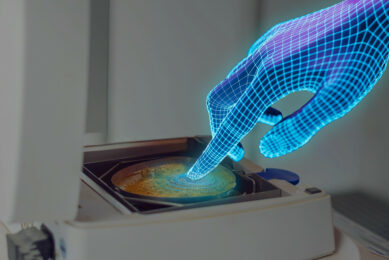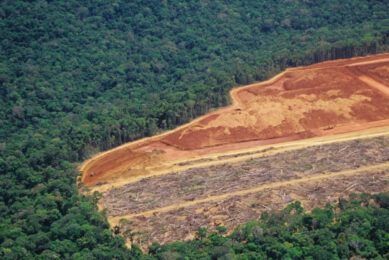4 ways NIR can support precision nutrition

With feed costs accounting for up to 80% of the total variable costs of animal production, precision nutrition is becoming increasingly more important as a way to stay competitive in the poultry industry. Near Infrared Spectroscopy (NIR) can be used by nutritionists to meet the specific nutritional requirements of the animal and achieve optimal protein production.
NIR can also support the feedstuff procurement process and feed quality control through quick assessment of the quality of incoming feedstuffs and outgoing finished feed.
NIR technology uses near infra-red light to analyse an ingredient or feed sample to predict its nutritional value. Precision nutrition programmes using NIR technology allow the nutritional value of feed and ingredient samples to be determined in a quick and simple manner generating actionable information to help poultry producers minimise economic losses and improve profitability.
Advancements in NIR are likely to bring industry-wide changes to the way in which feedstuff procurements and feed formulations are approached – we outline below 4 key ways that NIR technology can be used to support precision nutrition in the poultry industry.

Variability in raw materials brings challenges – and NIR can be used to understand this to help ensure animals receive adequate nutrition
Driven by nutrient variability of key raw materials, poultry feed manufacturers will continue to focus on tools and technology to assess variation. For example, while the average crude protein of soybean meal might be 47%, there may be a range of 46.00-48.00% within a set of samples. Rapid sample analysis by NIR allows nutritionists to better understand the variation in raw materials, enabling them to change their diet formulation, adjust ingredient safety margins and monitor feed mill efficiency by correlating formulated diets to the actual diet nutrient value – minimising over and under formulating diets and ensuring the animals receive adequate nutrition.

Advancements in NIR are enabling it to be used beyond traditional proximate analysis, providing greater insight into the nutritional value of feed
Phytate, present in all plant-based feedstuffs, reduces digestibility and utilisation of important nutrients in the diet. The levels of phytate is raw materials varies, and NIR technology can be used to measure these levels. Understanding the phytate level can help nutritionists to optimise their phytase dosage without risking performance losses or welfare problems.
Advances in NIR technology can be used to predict the AME of cereals, including corn, which has been shown to vary by as much as 360 kcal/kg. NIR can help nutritionists better understand their corn variation, to optimise diet formulation and monitor incoming corn from suppliers.
Heat damage during processing of protein meals can also be monitored using NIR. As lysine is heat-processed, it loses its nutritional value through the formation of Maillard products. Reactive lysine, lysine that has not undergone the Mailard reaction, can be measured by NIR as an indicator of heat damage; with reactive lysine content being reduced with over-processing. Whilst it is not currently possible to formulate to reactive lysine requirements, it is certainly a tool that could be used for supplier selection.

Seeing the full data picture
One of the benefits of NIR is the ability to measure a large number of samples, enabling you to develop a large database of results upon which more informed and accurate decisions can be based. Beyond having confidence in the results, the value of having a large database of raw material quality, or feed analysis, can be transferred into real – life applications such as trending and benchmarking or segregation of incoming raw materials as well as supplier selection.

New developments in Near Infrared Spectroscopy (NIR) technology are unlocking greater insights for the feed industry, which should mean improved returns for producers
Latest NIR technology software and hardware developments can help nutritionists better understand their feed ingredients. Emerging technologies such as centrally maintained on-line calibrations, pay-as-you-use calibrations, portable NIR and affordable in-line NIR installations are making NIR technology more accessible across the entire feed industry enabling you to extract the full potential of NIR.
Read also: Sophie’s previous blog on data visualisation











